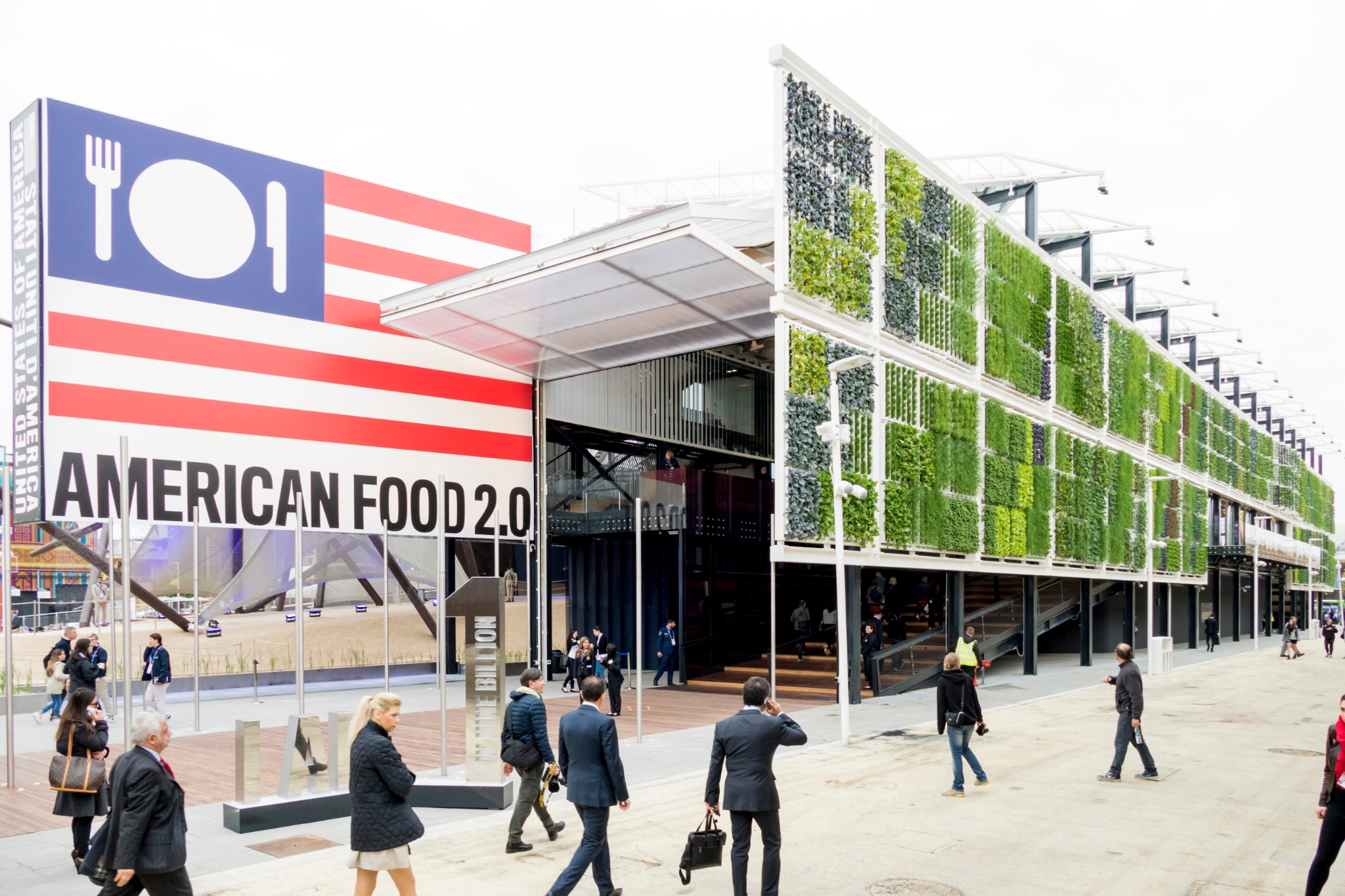 USA Pavilion at Milan Expo 2015 (U.S. Department of State on Flickr)
USA Pavilion at Milan Expo 2015 (U.S. Department of State on Flickr)
America’s Expo Quandary
Tuesday, October 20 was meant to be the opening day of the Dubai World’s Fair. Also known as Expo 2020 Dubai, it is the first world exposition to take place in the Middle East. Due to the pandemic, the six month long event has been rescheduled for October 1, 2021. Furthermore, the 2021 Doha World Horticultural Expo (Expo 2021 Doha) may also be rescheduled for October of 2023.
World expositions are an opportunity for participating countries to come together and display their culture, technology, interests, and ideas. Similar to the Olympics, they are mega-events which require years of planning, attract millions of tourists, and could perhaps give the chosen city an economic boon. Many of the world’s tourist landmarks, such as the Space Needle in Seattle and the Eiffel Tower in Paris, are a product of previous world expositions. Used to flaunt the technological innovations of the Industrial Revolution, the first exposition was held in London in 1851. Known as the Great Exhibition, the event was a great success, involving 32 countries and attracting six million visitors.
The Bureau International des Expositions (BIE) was created in 1928 as a means to consolidate future exposition planning activity. Subsequent expos after the Great Exhibition suffered from a lack of transparency, inconsistent funding, and smaller, imitation events guised under the name World Expo or World’s Fair. BIE mitigates this issue by regulating the size, quality, and duration of exhibitions. BIE-sanctioned, large expositions are six months long and held every five years. Smaller exhibitions, known as specialized expos, are BIE-recognized, three months long, and occur between two large expos. Colloquially speaking, both types of events are commonly referred to as World’s Fairs or World Expos, though it is actually BIE-sanctioned events that carry this name. Expo themes have always existed, but BIE reinforces this. A 1994 resolution states that expositions “must address crucial problems of our time and tackle the challenge of environmental protection.”

The Eiffel Tower and Ferris Wheel, two world exposition inventions that have become cultural icons. Photo taken from U.S. Department of State page on Flickr.
America’s presence in world expositions in the twentieth century went from aspirational to near apathetic. Before the Second World War, the United States had a strong world exposition presence, hosting the event in St. Louis in 1904, San Francisco in 1915, Chicago in 1933, and New York City in 1939. Following the War, the United States hosted five expositions. Only one of these, the 1962 Seattle Expo, also known as the Century 21 Expo, was a full-scale exposition.
The last expo to take place on American soil was the 1984 Louisiana Exposition in New Orleans. Widely regarded as a fiasco, Expo 1984 New Orleans did not meet guest projections and is known as the first and only exposition to file for bankruptcy. A seemingly decreasing devotion to expositions continued with the abolishing of the expo unit of the United States Information Agency (USIA) in the 1990s, and the agency’s later consolidation into the United States Department of State (DOS) in 1999. Furthermore, America’s membership in BIE was revoked in 2001 due to Congress’ refusal to use federal funds to pay for American involvement in expositions. No longer a member of BIE, the United States was unable to compete to host an expo.
The consequence of these actions is an American presence at expositions whose quality has declined over time. Additionally, refusal of federal support inevitably creates frantic, last-minute searches for funding for pavilion preparation. These frustrating consequences were even evident in preparations for Expo 2020 Dubai. Dependence on corporate sponsors results in pavilions portraying a United States of Corporations rather than United States of America. Worst of all, devoting little attention to expositions after the 1984 misstep has molded two generations of Americans with no experience, knowledge, or interest in world’s fairs.
There have been efforts to reverse this unfortunate course of events. Unanimous passing of the U.S. Wants to Compete for a World Expo Act in 2017 allowed for America to rejoin BIE, thereby allowing the U.S. to compete with other countries to host future expositions. While a good start, this effort has not yet been fully successful. America lost the bid for Bloomington, MN to host the 2023 Expo, losing to Buenos Aires, Argentina.
Hosting a world exposition provides significant benefits for the host city, and perhaps country. Preparation for the event is a catalyst for providing or updating infrastructure to a city, as what happened in Seattle. Diplomatically speaking, since the majority of exposition visitors are residents of the host country, the events are valuable educational opportunities. It has already been said countless times that Americans lack global knowledge. However, what gets lost in the discussion is that times are changing; Americans want to engage with the rest of the world in a manner that is not as militaristic as the past.
Nation branding is another vital reason to participate in expositions. What should people think upon hearing “the United States?” This is hard to answer; perhaps 2020 has made this even more difficult to pin down. From this point on, it is essential for the United States to construct pavilions at future expositions which answer this question. Exhibiting inventions and innovations have always been a feature of such events. America has already amassed its fair share of technological achievements in the twenty-first century. The world should know a United States that is a country of innovation and achievement rather than isolation.
World expositions are an opportunity for countries to come together to imagine a safer, cleaner, and more technologically advanced tomorrow. With the United States once again a member of BIE, 2027 might be the year that America gets to redeem itself on the global exposition stage.





